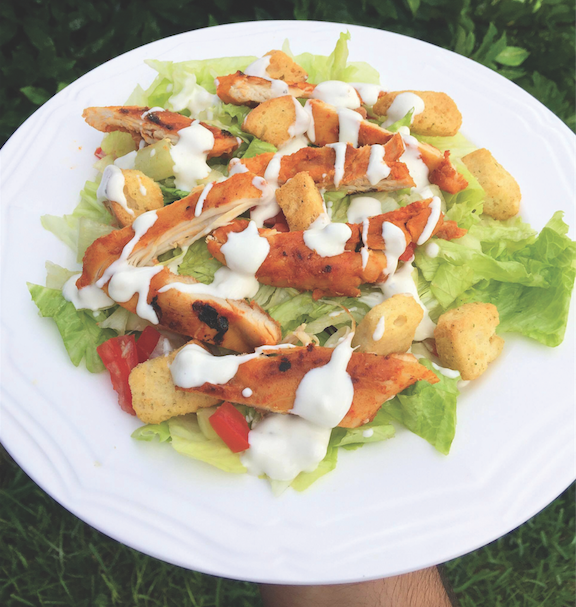7 tips on eating healthy while broke
October 24, 2016
Just because you have an intense class schedule or you’re riding the poor, struggle bus, doesn’t mean your health or physique needs to be sacrificed. To help ease our ever growing muffin tops, we turned to Molly Kimball, an experienced dietitian at Ochsner Fitness Center and founder of Eat Fit Nola, which works with restaurants to highlight the better-for-you items right on the menu. Of course, everyone’s body is different, so these tips are more of a general guidance to steer you in the right direction.
1. Think outside the green box
“Greens are great, but anything with color typically reflects the nutrients that is in it. When you add in the purples and the reds and oranges, you get a full spectrum of all the other nutrients, and it also helps with the price point,”
Kimball said.
So when you go to the Orleans Room or are cooking back home, stack your plate with tomatoes, onions, broccoli, spinach, etc. before you load up on that pizza.
2. Drink your veggies and eat them too
“I am all about drinking veggies because you get a lot more out of drinking them than if you ate massive amounts of produce,” Kimball said. “Juicing is good because it is a good way to get a lot of nutrients in so little space; because when you eat them, all the fiber bulks up and you would not be able to eat as much as you can drink.”
Juicing is a great way to keep in shape, but it is expensive when one bottle of kale and celery juice costs you eight valuable dollars.
Kimball recommends going to Costco and buying carrot juice, tomato juice and beet juice. Stay away from the fruit juices, though, because they are high in sugar.
3. The freezer is your best friend
Frozen vegetables are frozen right after they are harvested, and many times frozen veggies are just as nutrient-rich as fresh produce.
“If you have frozen cauliflower, broccoli and spinach, it can sometimes be more nutritious than if you get it fresh because it hasn’t been exposed to the heat, the light, the air and the transportation,” Kimball said.
This is great for those of you who don’t have the time to run to the grocery every 10 days, as is recommended.
4. If you do cook, use the right oil
The most affordable oil to use for cooking is olive oil, but which type?
“Extra virgin olive oil is very nutrient dense because there is no heat added to it. It has a very low smoke point, so when you bring it to a high temperature to saute, the oil starts to oxidize into the compounds that are linked to heart disease and cancer. It is best used for drizzling and dipping,” Kimball said.
She recommends using extra light olive oil, which has a much higher smoke point. It is good to cook in high heat, but it does not have much flavor, meaning it would not be good with your salad.
5. Dial back on the carbs and stock up on protein
Let’s face it, the most exercise some of us get in college is walking from building to building.
“We don’t need a lot of carbs to fuel our non-movement, so I’m a big fan of getting protein throughout the day and getting some carbs; not necessarily a low carb diet, but definitely dialing back on the pastas,” Kimball said.
For someone with a low exercise lifestyle, sticking with higher lean protein and more veggies, some healthy fats such as avocado and certain fruits, especially berries, which are super antioxidant rich but not high sugar, and going lower on the carbs is ideal.
Eggs and canned beans are also a great and affordable option for protein.
6. Snack Right
There is nothing worse than being “hangry,” so snacking is not the worst thing you can do. If you live in a dorm or don’t have time to cook, keep healthy snacks like cereal, peanut butter and protein bars around, but make sure they do not have a lot of sugars.
“I like Special K protein cereal or Skinny Pop, which is a better alternative to chips. Nature Valley is also more cost effective, so get the protein bars.”
7. Pack your food!
If you are on a budget but know you are going to be in the library all day, then pack yourself some snacks and lunch. When you cook your dinner, make enough to have leftovers so you can bring it to campus the next day. This way, you won’t be tempted by that free pizza.







